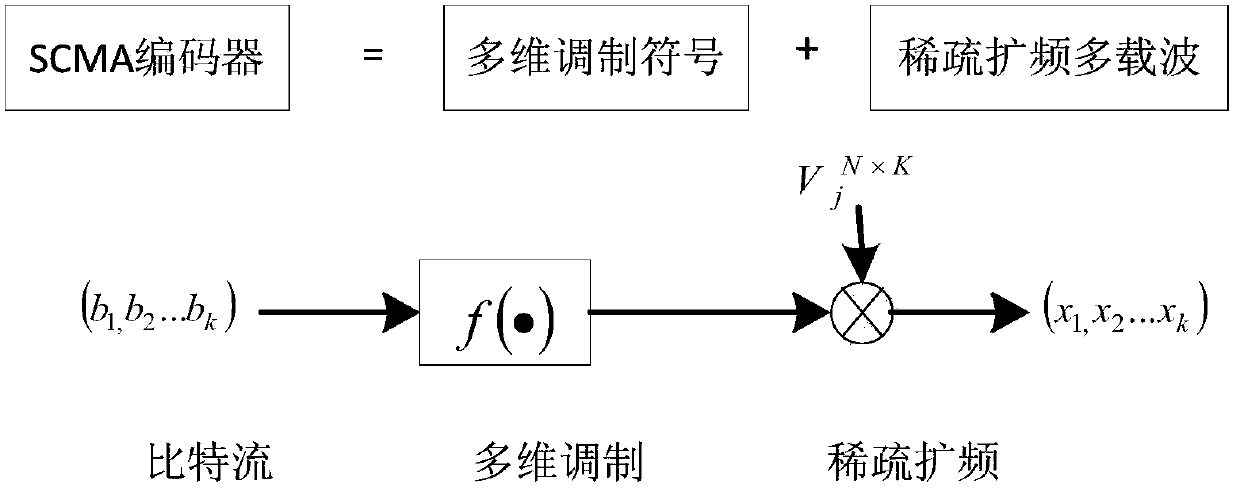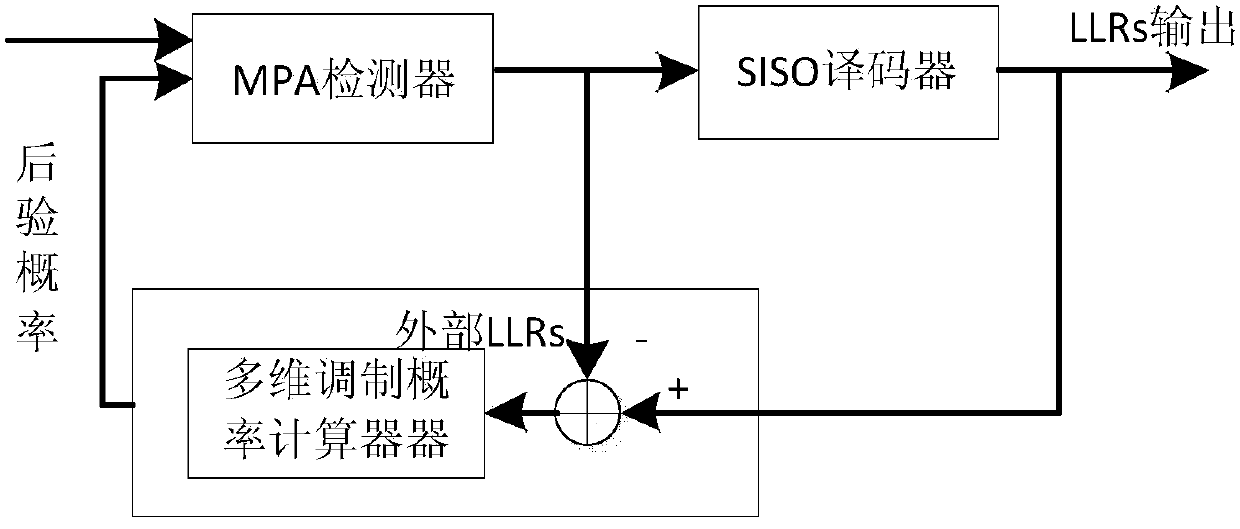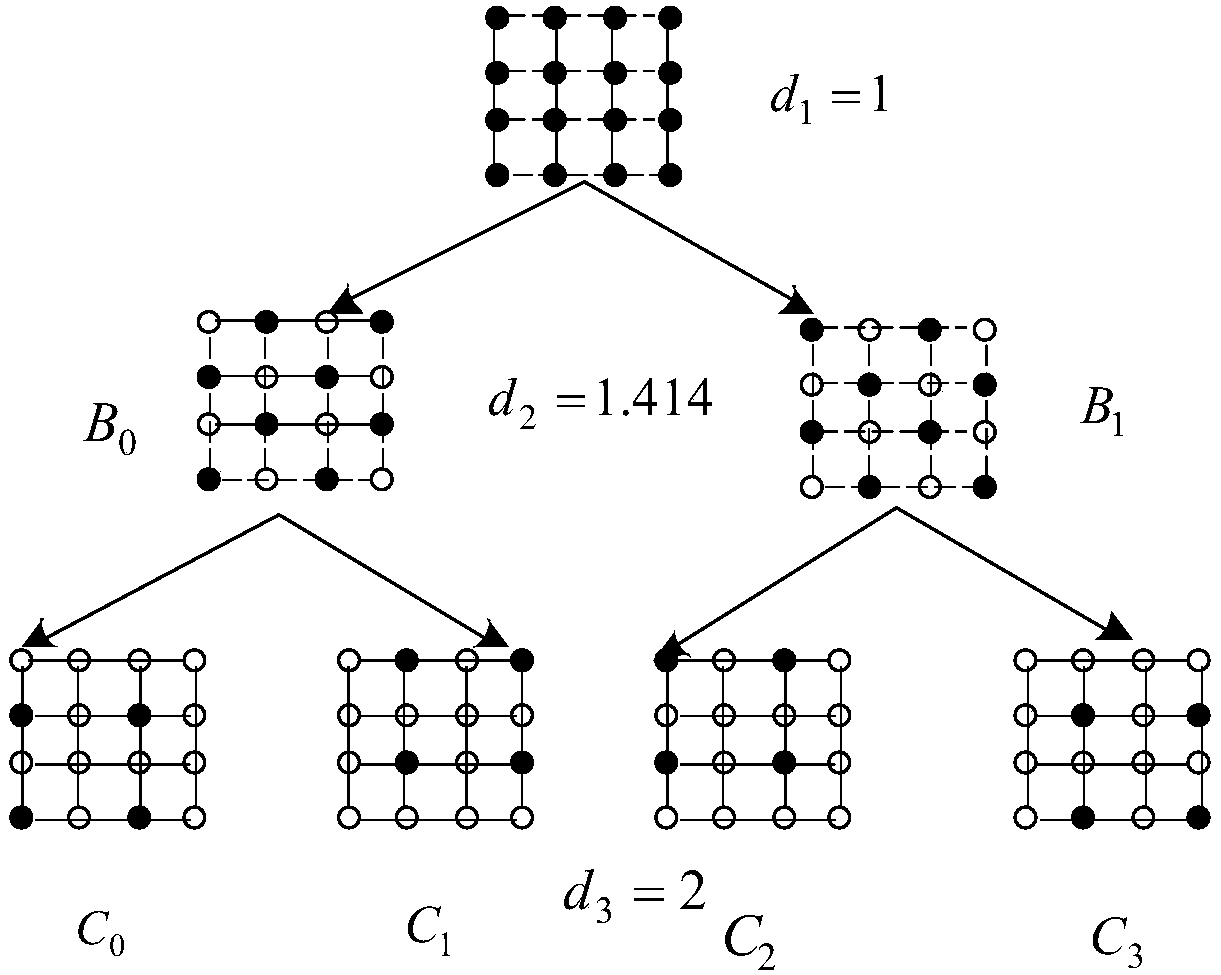Optimization method for overload characteristics of SCMA uplink multiple access system
A technology of access system and overload characteristics, applied in the field of code domain non-orthogonal multiple access, can solve the problems of reducing the Euclidean distance between constellation points and high bit error rate, and achieve good performance and system bit error rate performance. Effect
- Summary
- Abstract
- Description
- Claims
- Application Information
AI Technical Summary
Problems solved by technology
Method used
Image
Examples
Embodiment Construction
[0042] Embodiments of the invention are described in detail below, examples of which are illustrated in the accompanying drawings. The embodiments described below by referring to the figures are exemplary only for explaining the present invention and should not be construed as limiting the present invention.
[0043] Combining with the subset segmentation method in trellis coded modulation, the present invention proposes an optimal design method for the overload characteristics of sparse code multiple access, first generating the total constellation diagram of all users on each resource block, and then using the signal subset segmentation The constellation diagram of each user is generated from the overall constellation diagram on the resource block, and finally the codebook is designed in combination with the low-density spreading code. At the receiver, the message passing algorithm (Message Passing Algorithm, MPA) is used to process to decode. Specifically include the follo...
PUM
 Login to View More
Login to View More Abstract
Description
Claims
Application Information
 Login to View More
Login to View More - R&D
- Intellectual Property
- Life Sciences
- Materials
- Tech Scout
- Unparalleled Data Quality
- Higher Quality Content
- 60% Fewer Hallucinations
Browse by: Latest US Patents, China's latest patents, Technical Efficacy Thesaurus, Application Domain, Technology Topic, Popular Technical Reports.
© 2025 PatSnap. All rights reserved.Legal|Privacy policy|Modern Slavery Act Transparency Statement|Sitemap|About US| Contact US: help@patsnap.com



